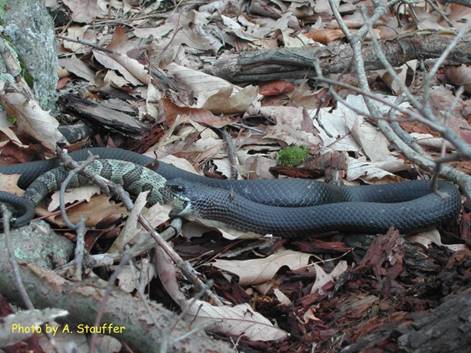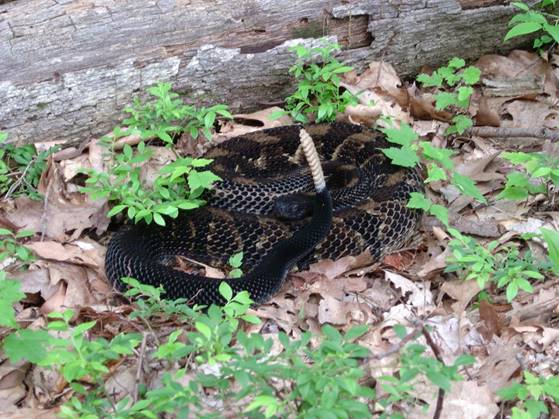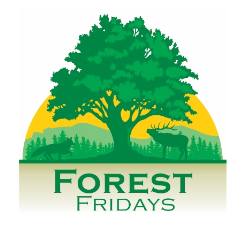Timber Rattlesnakes in Pennsylvania
By Aura Stauffer
Hiking a state forest trail this time of year brings a higher probability of a snake encounter, and the timber rattlesnake is the species that people generally fear the most. One of three venomous snakes that occur in PA, the timber rattler embodies the wild appeal of Penn’s Woods.
The much-maligned rattlesnake generally exhibits a docile nature but still must be respected. If you are hiking in the woods, be aware of your surroundings. Wear boots that at least cover the ankles and look for rattlesnakes before you sit down or reach under logs and brush. Rattlesnakes are attracted to these structures to hunt mice and other rodents. Also, be careful when visiting sunny, open, and rocky areas. Scenic forest vistas can have spectacular views, but they are particularly attractive to basking reptiles. Never attempt to pick up a snake, even if it appears to be dead. Most people who are bitten by venomous snakes are attempting to handle them.

Rattlesnakes emerge from their winter dens in early spring and typically seek out sunny, open, south-facing rock habitat. Males and non-pregnant females will leave sunny habitat after shedding in June to forage in the woods for prey within an established home range. They will travel a similar route every year before returning to the same den in the fall. For this reason, it is important to not move nuisance snakes (e.g., snakes that repetitively appear at a campsite) more than 200 yards. Pregnant females will stay in the open rock habitat until they give birth to live young in late summer to early fall.
DCNR actively conserves timber rattlers and their habitat throughout the commonwealth, helping combat a major decline in rattlesnake populations due to direct killing, poaching, and mortality linked to development. Rattlesnake populations are rebounding statewide, particularly in the northcentral region. Unfortunately, the timber rattlesnake is listed as threatened or endangered in many states that surround PA (e.g. New York, Ohio).
DCNR partners with the PA Fish & Boat Commission (the regulatory agency for reptiles and amphibians) to assess, monitor, and protect rattlesnakes on DCNR lands. While rattlesnakes can be taken in PA from June 9 through July 31, 2019 with a venomous snake permit (issued by the PFBC), some populations are protected. Severe, human-caused impacts to South Mountain rattlers have necessitated additional protection. Thus, rattlesnakes in Michaux State Forest are protected and cannot be taken, even with a venomous snake permit. Additionally, 28 state forest natural areas are off-limits for collection (click here for the list).

Education is essential for the survival of timber rattlesnake populations throughout the commonwealth. DCNR created the brochures “Timber Rattlesnakes in Pennsylvania’s State Forests” and “Timber Rattlesnake Conservation Strategy for Pennsylvania State Forest Lands” specifically for this purpose. Natural resource professionals and forest visitors are urged to review these documents. Please help us conserve timber rattlesnakes by tolerating and respecting these unique and beautiful creatures.
About the Author: Aura has a B.S. and M.S. from the Pennsylvania State University in Wildlife and Fisheries Science. She has worked with the Environmental Protection Agency, Office of Wetlands and Waterways in Washington, DC as a consultant, and for the Audubon Society at the Audubon Camp in Maine as a marine biology instructor. More recently, she worked as an environmental consultant for Gannett Fleming Engineers in Harrisburg, and as the County Inventory Coordinator for The Nature Conservancy, PA Science Office in Middletown, PA. She is currently employed (since 2002) as a wildlife biologist with the Pennsylvania Department of Conservation and Natural Resources, Bureau of Forestry where she works mostly with non-game species management on state forest lands. She also volunteers with Project Owlnet where she bands saw-whet owls at the Kings Gap State Park banding station. This article was originally written for the DCNR Bureau of Foresty’s Forest Friday’s e-newsletter.



